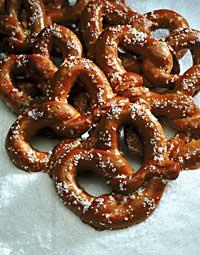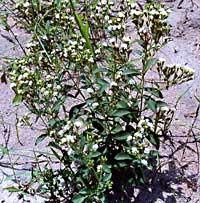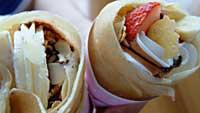Stevia for pastries and not so sweet

Undoubtedly, the sweetener most used is sugar, the sugar extracted from the cane. But more and more other sweeteners are used. Some use them for fear of fattening, others for believing they are better for health and others, necessarily, because they have to control blood sugar.
However, there is no problem in replacing sugar with other condiments, but all have advantages and drawbacks. In addition, it depends on the preferences and health status of each person.
To enjoy life
You can choose between the common sugar (extracted from sugar cane or beet) and honey, fructose and sucrose (suitable for diabetics in their proper measure), saccharin... And there are many other sweeteners, but mainly used in the food industry: sorbitol (which is placed in sugar-free gum), xylitol, lactiola...
And there is a sweetener less known among us: it is called stebioside and in Japan, for example, it is much consumed. Stevia rebaudiana (Stevia, summary) are small white specimens that leave the plant, so it is natural sweetening. It is also much sweeter than sugar itself; three hundred times sweeter, to put it exactly. And that's something.

Being so sweet hinders the measurement. Think that if we add two tablespoons of sugar to the coffee, we would have to measure three hundred times less. Is it not easy? Therefore, this condiment is usually sold diluted. And where do they sell? Well, you will not find it in the stores of our country, because it has not obtained the permission of sale in the European Union.
It seems that about five years ago, Stevia's marketing authorization was requested in Europe, but in the report that was presented to the effect, data were missing and the requirements established by the administration were not exceeded to ensure food security.
However, many researchers claim that this delicious is totally safe and a group of researchers from the University of Louvain (Belgium) has written a book on the safety of Stevia consumption. Therefore, it is foreseeable that before or after it is also sold in Europe and that we have a more available sweetener.
The perfect sweetener?
One of the characteristics of stebioside is very sweet. And it is that they do not call Stevia Rebaudiana ‘the sweetest plant in the world’. Of Brazilian origin and of other South American countries, its leaves have been used for centuries by the indigenous guaraníes for the enjoyment of mate, etc.

Of course, instead of using the stebioside itself, chopped leaves of the plant can also be used, as this sweet compound accumulates mainly in leaves. The leaves are not as sweet as the simple stebioside, but it is not imagined that they are between twenty and forty times sweeter than sugar.
But besides being so sweet, the stebioside, and also Stevia, has other special features. For example, it does not raise blood glucose levels and, related to it, does not get fat. As it is said in the street language, it has no calories, since the stomach and intestine do not absorb it and it largely comes out as a metide in the body.
That can also have a negative part: our body cannot become energy, and therefore, that joy is not nourishing. This feature should be taken into account if it is given to children, for example.
We have said that it is very sweet and does not fat, but also does not produce cavities, and being stable at high temperatures can be used in the kitchen to make pastries and other desserts. In general, it can replace sugar when cooking anything.

Well, you can't fulfill all the sugar functions by not taking brownish color when burning, so we can't use it to make caramel for flanes, for example. But for the rest, they say that it does not lose sweet flavor when heated, unlike other sweeteners, so it can replace sugar.
With these characteristics, someone may think that it is a perfect joy. But remember that there is no perfection. As in all facets of life depends on who looks at perfection. And more than the word ‘perfect’ is the use of the word ‘proper’: for some Stevia will be the best pleasure, for others not.
In view of the success it has in Japan, it can be said that it is suitable for a large number of people; approximately 40% of all the sweeteners used by the Japanese are Stevia or Estebioside plants. And that means something. In our case we still do not have it available and we will decide it when it arrives.
Published in 7K.
Buletina
Bidali zure helbide elektronikoa eta jaso asteroko buletina zure sarrera-ontzian











